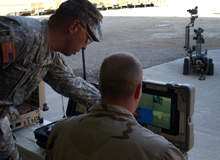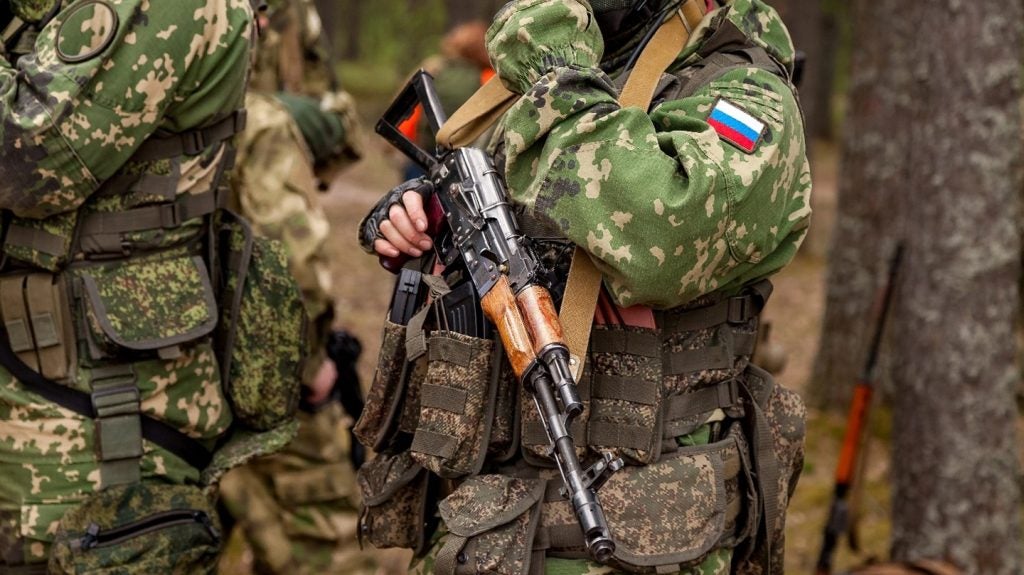
The world is a different place now to when Operation Enduring Freedom began in 2001. The fear of financial collapse is currently greater than the overhanging spectre of terrorism, but that hasn’t stopped new US President Barack Obama pledging to send 30,000 extra US troops to Afghanistan in a bid to solve what he calls an ‘urgent security threat’.
Conditions on the battlefield have changed almost as much as those off of it. Just as America’s first black president has replaced an oil-conscious white Texan in the White House, war in the Afghan theatre is almost unrecognisable as that which broke out eight years ago.
Afghanistan drives military technology revolution
"What we’ve seen since the beginning of war in Afghanistan is a revolution equal to that inspired by the introduction of gunpowder, the machine gun or the tank," says Peter W Singer, director of the 21st Century Defense Initiative at leading research unit The Brookings Institution and author of Wired For War."Unmanned systems, unused and unwanted at the beginning, are now saving the lives of thousands of soldiers."
Related project
RQ-1 Predator UAV
RQ-1 Predator is a long-endurance, medium-altitude unmanned aircraft system for surveillance and reconnaissance missions.
See Also:
Developments in technology have allowed scientists, manufacturers and military personnel to come up with innovative equipment that has changed the face of modern warfare since the beginning of the war in Afghanistan according to Institute for Global Futures CEO Dr James Canton. But will president Obama’s shift in US focus away from Iraq towards Afghanistan spur further innovation? Or will the global financial crisis derail future projects?
How well do you really know your competitors?
Access the most comprehensive Company Profiles on the market, powered by GlobalData. Save hours of research. Gain competitive edge.

Thank you!
Your download email will arrive shortly
Not ready to buy yet? Download a free sample
We are confident about the unique quality of our Company Profiles. However, we want you to make the most beneficial decision for your business, so we offer a free sample that you can download by submitting the below form
By GlobalData"There has been a shift over the past 15 years," says Canton. "Most innovation comes from the private sector now. That isn’t going to stop and the military will be the beneficiaries of that."
Singer isn’t quite so confident that there will be money available to pioneer further innovation, but he does believe that war machines will continue to be at the forefront of the revolution in warfare being experienced both in Afghanistan and Iraq.
So what technologies are being researched and implemented to change the future of war in Afghanistan?
Military robotics – the UAV example
The Predator B UAV, or MQ-9 Reaper, is the next generation of highly weaponised UAVs
Little more than glorified toys when coalition troops first took the fight to the Taliban, military robots have advanced so much there is expected to be 10,000 of them deployed in the field in 2009. Performing tasks like surveillance, troop rescue, mine clearance and target identification, robots have become an indispensable part of military life in Afghanistan because they take humans out of harm’s way.
Related feature
The top five military robots
Army-technology.com identifies the top five robots currently in-theatre and the impact they have had on the battlefield.
"Robotics has finally been accepted by the military," says Singer. "There was a lot of resistance to them initially but attitudes have changed because it has been demonstrated that you can send machines on missions that it would be dull, dirty or dangerous for humans to do.
"In addition, technology is evolving and the robots themselves are becoming exponentially better year on year. In 2001 the human-operated Predator drones saw Osama bin Laden moving about between caves but couldn’t do anything about it as they were unarmed. The Reaper, which is basically the next generation version of the Predator, is highly lethal and is so packed with AI that it can make decisions on its own."
Greater protection with M-ATVs
The Oshkosh MRAP is on of new generation of M-ATVs
When they first entered Afghanistan, US army tactical vehicles were defenceless against improvised explosive devices (IEDs) because they did not have armour. Although they tried up-armouring vehicles to rectify the problem, IEDs (also known as roadside bombs) remain the biggest killer of coalition troops, accounting for 33% of deaths in 2008 according to figures published by the International Security Assistance Force.
Related project
MRAP All-Terrain Vehicle (M-ATV)
The Oshkosh MRAP (mine-resistant ambush-protected) all-terrain vehicle (M-ATV) is an armoured vehicle with improved mobility.
The new great white hope is the mine-resistant ambush-protected all-terrain vehicle (M-ATV). The M-ATVs are lighter than the mine resistant ambush protected vehicles (MRAPs) that have been successful in countering IED attack in Iraq and will be suitable for off-road use, which is critical in the Afghanistan war theatre.
"We’re growing and our formations are growing faster than we can keep up with the sourcing," says general Ann Dunwoody, the new commander of army materiel command at Fort Belvoir in the US. "Given the two different terrains in Iraq and Afghanistan, the same vehicle doesn’t fit in both environments. We are working with industry to see how fast they can deliver a different kind of technology."
Military communications – new improved connections
At the beginning of the war the US army was hamstrung by old-fashioned radios and networks that required line-of-sight communication, which was completely unsuitable for the mountainous Afghan terrain.
"We got into some tactical satellites but for the most part, we’re a very line-of-sight focused force, and that presented some significant challenges," says lieutenant colonel John Burger, chief of the US army’s central command strategic programmes branch. "There are some promising technologies coming to the fore. I think the biggest foundational change has been from line-of-sight to over-the-horizon capabilities in different form factors."
Related feature
C4I: The IP Revolution
How transferring information within a fighting force can tip the balance in the outcome of military action.
Other advances have included voice over internet protocol (VoIP), which allows conversations to be held securely, and video conferencing capabilities that negate the need for generals to meet up physically to discuss tactics.
"Soldiers in the field have far better communications capabilities now," says Singer. "They are lashed together and back to those behind the lines better than ever, giving them greater situational awareness. But these advancements aren’t without their problems.
"An overwhelming amount of data is being transferred back and forth, so it is not efficient. And the ability to be connected to senior officers is like crack for some generals. They can’t help getting involved in micro managing low-level aspects of battle. And if they’re doing that who’s doing their jobs?" he asks.
The next big development will be the joint tactical radio system (JTRS), a family of revolutionary software-programmable tactical radios that will provide soldiers with interoperable voice, data and video communications, when they go live in 2010.
Future combat systems
The masterwork of the US army is future combat systems (FCS). Designed in response to the demands of modern warfare in Iraq and Afghanistan, FCS will be live from 2015, although some elements of the technology are being tested by troops already.
FCS consists of eight new manned ground vehicles, a family of unmanned air and ground vehicles, the non-line-of-sight launch system and advanced tactical and urban sensors, all connected to a state-of-the-art network of computers, software and radios that will allow full connectivity between soldiers at any level from brigade to squad.
"Future combat systems is being designed in line with what we know about war generally and from the experiences of soldiers in Afghanistan," says Canton. "Soldiers need better protection, lighter equipment and more precise weapons systems that are less complicated to use.
"The weapons systems they have at the moment were not designed for the cold of Afghanistan. They need a system that can morph in different environments because the nature of warfare is changing all the time."
The future of military technology
Developments in technology have allowed scientists, manufacturers and military personnel to come up with innovative equipment that has changed the face of modern warfare since the beginning of the war in Afghanistan.
But will president Obama’s shift in US focus away from Iraq towards Afghanistan spur further innovation? Or will the global financial crisis derail future projects?
"There has been a shift over the past 15 years," says Canton. "Most innovation comes from the private sector now. That isn’t going to stop and the military will be the beneficiaries of that."
Singer isn’t quite so confident that there will be money available to pioneer further innovation, but he does believe that war machines will continue to be at the forefront of the revolution in warfare being experienced both in Afghanistan and Iraq.
"Even at a time of shrinking defence budgets, there will be one area of sure growth and that’s unmanned systems," he says. "Investment is being driven by the capabilities of these unmanned systems and demand for them in the field. This is just the start of the revolution."







